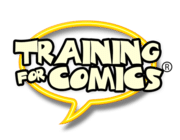Four keys to writing that story you’ve been longing to tell
Have you ever felt like you have an incredible story in your mind, but when you sit down in front of a blank page, the words just don’t flow? You’re not alone. Many aspiring writers face this challenge. In this article, we’ll reveal four fundamental keys to unlock your creativity and bring to life that story you’ve been yearning to tell for so long. Get ready to immerse yourself in a fascinating journey into the world of creative writing.
1. Organize your project: The map to your masterpiece
Imagine you’re about to embark on a great adventure. You wouldn’t set off without a map, would you? The same goes for your story. Organization is the compass that will guide your pen (or keyboard) to the desired destination.
Start by outlining your narrative. Think of it as the backbone of your work:
- Define your main characters and their motivations
- Sketch out the central conflicts that will drive the plot
- Visualize the narrative arc, from beginning to end
- Determine the crucial turning points in the story
This skeleton will serve as your guide throughout the creative process, preventing you from getting lost in the vast ocean of narrative possibilities. Want to take your ideas to the next level? Discover innovative tools here that will help you visualize and structure your story effectively.
In addition to organizing the content, it’s crucial to establish a writing routine. Determine how much time you can really dedicate to your project and be consistent. Even if it’s just a couple of hours a week, those moments dedicated exclusively to your story will make a difference.

2. Manage your expectations: The balance between ambition and reality
It’s natural to have high expectations for a story you’ve been developing for months or even years. However, it’s important to keep these expectations in perspective to avoid frustration and creative block.
Remember that the first versions of your story probably won’t achieve the perfection you imagine. This is completely normal and part of the creative process. Instead of aiming for immediate perfection, focus on:
- Clearly defining what you want to convey with your story
- Identifying the themes you want to explore
- Visualizing the emotions you want to evoke in your readers
- Reflecting on how you’d like to feel when reading your own work
Remember, Rome wasn’t built in a day, and neither will your masterpiece. Click here to explore techniques that will help you develop your narrative style step by step, allowing you to grow as a writer organically and sustainably.
3. Consistency: Your most powerful ally on the writer’s journey
In the world of writing, consistency is the fuel that keeps the creative machinery moving. Faced with the inevitable obstacles that will arise during your writing process, perseverance will be your best weapon.
Being consistent doesn’t necessarily mean writing at a frantic pace every day. The key is to find a balance that fits your lifestyle and commitments. Some strategies to cultivate consistency include:
- Setting realistic and achievable goals
- Creating a dedicated writing space, free from distractions
- Developing rituals that help you enter “writing mode”
- Celebrating small achievements to maintain motivation
Remember that consistency isn’t about speed, but persistence. Looking for inspiration to maintain your creative rhythm? Enter here and discover resources that will fuel your passion for writing, helping you stay on course even on the most challenging days.

4. Become an attentive reader: Reading as a learning tool
Paradoxically, one of the most important keys to writing a great story is… reading. Attentive and analytical reading of works in your genre or area of interest can provide you with invaluable insights for your own writing.
When reading, don’t limit yourself to passively absorbing the narrative. Instead, adopt a “detective reader” stance, analyzing how other authors have approached challenges similar to those you face in your story. Some questions you can ask yourself while reading include:
- How does the author develop character arcs?
- What narrative techniques does he use to maintain suspense?
- How are conflicts resolved satisfactorily?
- What elements of the author’s style could you adapt to your own voice?
This analytical reading will not only enrich your understanding of narrative but will also provide you with an arsenal of creative tools for your own writing. Eager to perfect your narrative skills? Explore specialized resources here that will help you apply what you’ve learned from your readings to your own work.
Conclusion: Your story is waiting to be told
Writing that story you so desire doesn’t have to be an unattainable dream. With organization, realistic expectations, consistency, and attentive reading, you have all the necessary tools to bring your creative vision to life.
Remember that every great literary work began as a simple idea in its author’s mind. What sets successful writers apart is not just talent, but the dedication and perseverance to transform that initial spark into a burning flame of creativity.
Now it’s your turn. Take these four keys, adapt them to your style and circumstances, and start writing. Your unique story is waiting to be told, and the world is eager to hear it. Ready to take the next step in your journey as a writer? Click here and discover how to take your narrative to the next level.
Don’t forget that the writer’s path is a continuous journey of learning and growth. Keep an open mind, be patient with yourself, and above all, enjoy the creative process. Your masterpiece awaits you!



